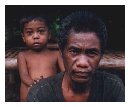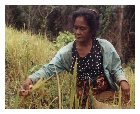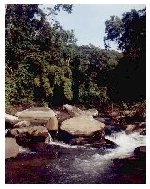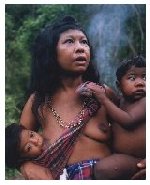 One of the first things that struck me about Palawan when I first arrived was
how amazingly clean and tidy it was. The drive from the airport to the capital
city of Puerto Princessa you couldn’t see a single piece of rubbish on the
floor, not a can, a bottle or even a cigarette butt. In fact there were no
people smoking or drinking on the streets, this was only allowed in the privacy
your own home, bars, or restaurants. Whatever laws that had been passed by the
local Government was certainly working – Palawan is the cleanest,
peaceful, law abiding Island I have ever been to in the Philippines, it is just
one of the things that set it apart from anywhere else. Having been here once
you are bound to come back again and again, guaranteed – already I have
been to Palawan three times.
One of the first things that struck me about Palawan when I first arrived was
how amazingly clean and tidy it was. The drive from the airport to the capital
city of Puerto Princessa you couldn’t see a single piece of rubbish on the
floor, not a can, a bottle or even a cigarette butt. In fact there were no
people smoking or drinking on the streets, this was only allowed in the privacy
your own home, bars, or restaurants. Whatever laws that had been passed by the
local Government was certainly working – Palawan is the cleanest,
peaceful, law abiding Island I have ever been to in the Philippines, it is just
one of the things that set it apart from anywhere else. Having been here once
you are bound to come back again and again, guaranteed – already I have
been to Palawan three times.
Palawan is one of the final frontiers of the Philippines. It is an Island of extraordinary beauty, situated west of the main Island of Luzon, sword shaped isle dividing the south China sea and Sulu sea. Its tribal people are some of the earliest settlers of the country. Malay tribes are said to have walked via land bridges that once connected the Philippine archipelago to the Asian sub-continent. The flora and fauna is exotic with over 100,000 species of Plants including indigenous forest species and rare orchids. There is animal life too which is unique only to Palawan such as the foot high Deer mouse, anteaters, civet cats, monkeys, lemurs, and over 500 species of birds including the Monkey eating eagle.
It is this backdrop that I have continued to visit and photograph various parts of Palawan.
On my most recent trip I decided to go South West of the Island, to Quezon, Rizal, Sikud to my final destination of the Sinapan valley in the Southern interior.
For a real feel of travel I took bus journey to Quezon with all the other locals together with their farm produce of rice, chickens and bananas, it was a packed bus filled with strange smells. Not the most comfortable ride as it took 7 hours through rough and rugged roads but interesting none the less. At one point it got trapped in a ditch as we tried to avoid a fallen tree and were delayed as the exasperated driver and conductor tried to dig their way out of the our predicament.
 Quezon was a way of breaking up our journey and a chance to visit the Tabon
caves situated on the Northwest of Lippuun Point. A 30 minute banca ride from
where we staying at The Tabon Village resort. There is a huge system of 200
caves of which only 29 have been explored. The Tabon cave being of great
importance for the prehistoric finds of human bones dating back to the Stone Age
which are the remains of the original Palawan inhabitants.
Quezon was a way of breaking up our journey and a chance to visit the Tabon
caves situated on the Northwest of Lippuun Point. A 30 minute banca ride from
where we staying at The Tabon Village resort. There is a huge system of 200
caves of which only 29 have been explored. The Tabon cave being of great
importance for the prehistoric finds of human bones dating back to the Stone Age
which are the remains of the original Palawan inhabitants.
I had a mysterious feeling being at the Caves, a feeling of connection with our ancestors, a certain affinity. I have always tried to look for evidence of Philippine Culture preceeding the Americans and the Spanish who have gradually eroded and in some cases deliberately destroyed our indigenous cultural heritage. The discovery of the burial grounds by Robert Fox in the Tabon Caves has been an important one. There is actually not much to look at in the caves (especially since they are not lit), seemingly like large holes in the mountainside, the Burial jars have been moved to the National Museum in Puerto Princesa and Manila.
Onwards to Rizal to catch our connecting bus to Sikud. Travelling with my friend Yann, I could experience the Palawan through fresh eyes. Which also helps when you are hiking through the forest as Mosquitoes and other insects invariably target the much tastier foreigner rather than myself. The Eco-tourists and adventurers that we were, have been getting further and further away from civilization and Sikud was the last stop.
There are no guide books to give information about this place nor any hotels, from here onwards I relied on instinct from previous travels. The first step is to introduce oneself to the Barangay Captain and enquire about guides for our forest trek. He made a note of our addresses should anything happen, and we were then introduced to a Palawan Cheftain by the name of Durio Puti, the man with two wives.
We bought provisions for our journey, which consisted of mineral water, noodles, rice, cans of tuna, corned beef chocolate biscuits, dried fish, coffee, tea, sugar, salt and sweets.
 For four days we were put through our paces by this short rather stocky man,
but strong and swift when it comes to negotiating perilous paths, thick with
vegetation. When we had begun, we started off with Chief Durio and two assistants
carrying our provisions and my camera equipment, but towards the end we had
about six guides who were carrying everything, even our own rucksacks and creating
bridges and handrails for us along the way.
For four days we were put through our paces by this short rather stocky man,
but strong and swift when it comes to negotiating perilous paths, thick with
vegetation. When we had begun, we started off with Chief Durio and two assistants
carrying our provisions and my camera equipment, but towards the end we had
about six guides who were carrying everything, even our own rucksacks and creating
bridges and handrails for us along the way.
Our route to Sinapan Valley was very difficult – on a scale of 1/10 it would probably be rated at 20. Steep inclines, muddy paths uphill and downhill, crossing streams and rivers at one point mountain climbing without the use of safety equipment, we were shattered.
Both my legs had cramp, at one point I had fallen off a tree bridge that collapsed under my weight, I grabbed on for dear life, my muscles had fatigue for days.
In the evenings we would make camp and enjoy our food which was now being rationed as we had picked up a few guides that also needed feeding, it was supplemented by eating boiled Cassava, alternating the garnish with salt, sugar, dried fish and our one treat of having it with spaghetti sauce. We rejected the local delicacies of bats and snails.
The reward for all this suffering was the most amazing views of unbroken virgin rainforest. Forests that are so remote and inaccessible it has remained the same for thousands of years.
 We made friends with the Palawan, stayed in caves with the Tao’t bato.
Swum in natural pools and waterfalls that were so clean, clear and fresh that it
revitalised our tired bodies.
We made friends with the Palawan, stayed in caves with the Tao’t bato.
Swum in natural pools and waterfalls that were so clean, clear and fresh that it
revitalised our tired bodies.
We had pushed our physicality to the limits but had felt the power of being alive on the planet, at one with nature it was somehow spiritual.
It is this very nature that has made Palawan a unique and magical place, it needs to be constantly guarded and protected from over development, the ecological balance preserved for future generations, as one the worlds last frontiers.